If you’re feeling overwhelmed by the myriad of leather options at your disposal, you’re not alone. This detailed guide is your go-to resource for making informed decisions about various leather products. Each leather type comes with its own set of unique benefits tailored to specific applications, such as the luxurious softness of calfskin or the unparalleled durability of full-grain leather. By understanding the distinct characteristics and origins of premium leather, you can ensure your choice enhances both the longevity and functionality of your items. This guide aims to help you select the most appropriate leather type for your needs, whether you’re shopping for shoes, jackets, or accessories. Remember, poor leather selection can lead to premature wear and financial loss. Let’s explore the various types and their ideal applications to empower your decision-making.
Uncover the Unique Characteristics of Diverse Leather Types
The wide array of leather types available on the market each possesses unique properties and applications, especially in the field of footwear manufacturing. Here’s an in-depth overview of the defining characteristics that set each leather type apart, helping you make an educated choice:
| Leather Type | Main Characteristics |
|---|---|
| Full-grain | Unmatched quality, natural surface, ultimate durability |
| Top-grain | Refined sanded surface, good durability, budget-friendly |
| Split leather | Lower layer of hide, less durable, economical option |
| Nubuck | Sanded top surface, soft and velvety texture |
| Suede | Soft, fuzzy finish with limited water resistance |
- Grain quality is a key determinant of leather durability and wear.
- Surface texture significantly influences both the aesthetic appeal and maintenance requirements of leather goods.
- Thickness plays a crucial role in determining the most suitable applications for each leather type.
Gain Insights into Common Leather Varieties for Better Decisions
When you’re in the market for leather that meets your specific needs, understanding the common varieties and their optimal applications is essential:
| Type | Best Use |
|---|---|
| Calfskin | Ideal for dress shoes and high-end accessories |
| Cowhide | Best suited for rugged boots and heavy-duty items |
| Pigskin | Perfect for budget-friendly accessories |
| Sheepskin | Excellent for soft goods and linings |
| Goatskin | Commonly used for gloves and lightweight accessories |
Dive Deep into the World of Exotic Leather Types and Their Unique Features
The captivating realm of exotic leathers showcases a variety of unique characteristics and striking appearances, making them highly desirable:
| Type | Properties |
|---|---|
| Alligator | Luxury items with exceptional durability and richness |
| Ostrich | Notable for its distinctive pattern and creamy soft texture |
| Stingray | Renowned for extreme durability and unique texture |
| Python | Flexible with distinctive scales that enhance character |
| Lizard | Characterized by fine texture and delicate patterns that appeal to fashion enthusiasts |
Products crafted from bonded leather consist of leather fibers fused with binding materials, and here are key aspects to keep in mind:
| Aspect | Detail |
|---|---|
| Composition | Composed of leather fibers blended with binding agents |
| Durability | Generally less durable than authentic leather |
| Cost | A more affordable option for budget-conscious consumers seeking leather-like alternatives |
| Usage | Commonly found in furniture and various accessories |
| Care needs | Requires minimal maintenance to preserve appearance |
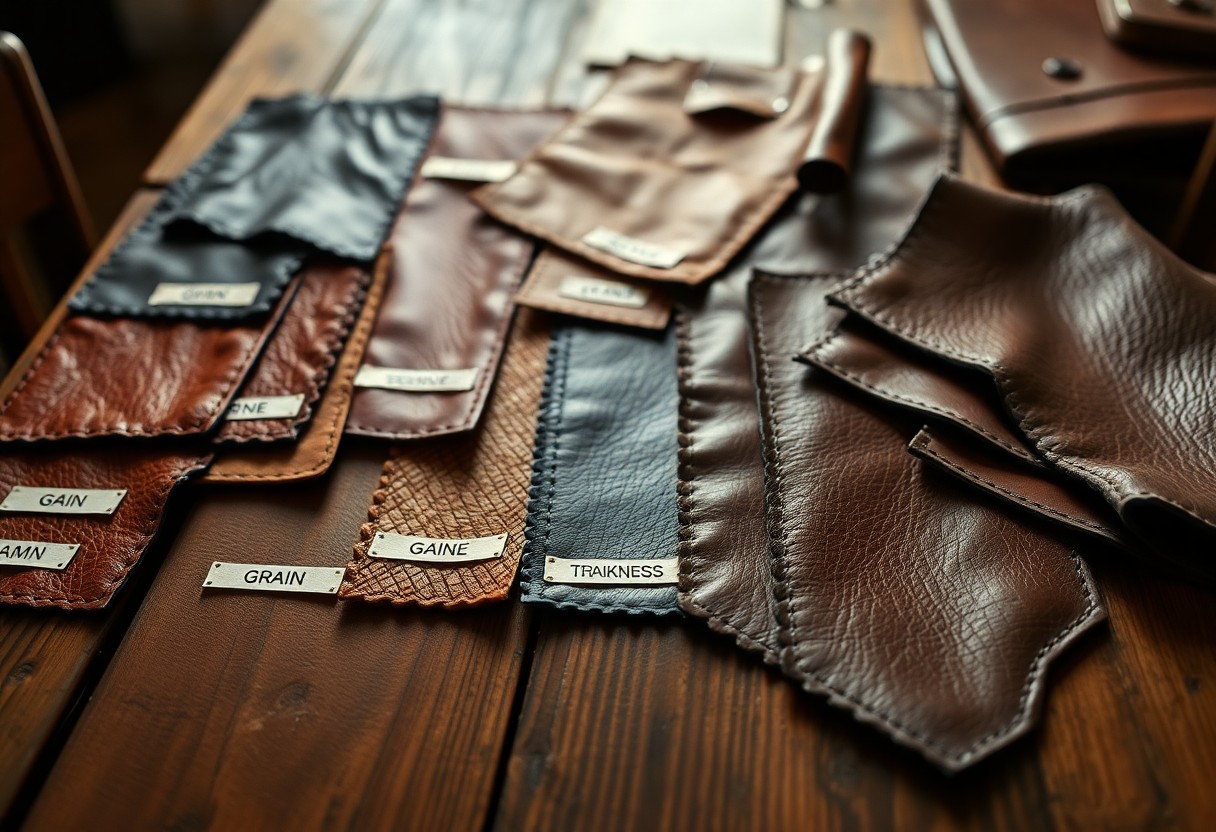
Essential Factors That Determine the Quality of Leather
Several factors can significantly influence the quality of leather, with the primary ones being animal source, hide preservation, tanning process, and finishing techniques. The durability and aesthetic appeal of your leather products hinge on these elements working together harmoniously. By grasping these factors, you empower yourself to make educated choices when selecting leather items that meet your expectations.
Assessing Leather Quality by Evaluating Animal Source
One of the most crucial determinants of leather quality is the animal source. The unique characteristics of your leather are closely linked to the age, breed, and living conditions of the animal from which it is derived. For example, calfskin is known for its exceptional softness and flexibility, in stark contrast to the more rugged texture of full-grown cattle hide. Moreover, exotic leathers sourced from creatures like crocodiles offer unique textures and remarkable durability, making them highly sought after in luxury markets.
The Crucial Role of the Tanning Process in Leather Quality
The tanning process is fundamental, as it transforms raw hides into usable leather through various chemical treatments. For instance, chrome tanning produces softer and more flexible leather, while vegetable tanning results in firmer and more natural leather options. The quality of the finished leather product is heavily influenced by the expertise and precision involved in the tanning process. Additionally, the duration and temperature control during tanning are critical for ensuring that the leather retains its integrity. Any inconsistencies during this process can lead to weak spots and uneven coloring, while hasty treatments may result in leather that deteriorates prematurely.
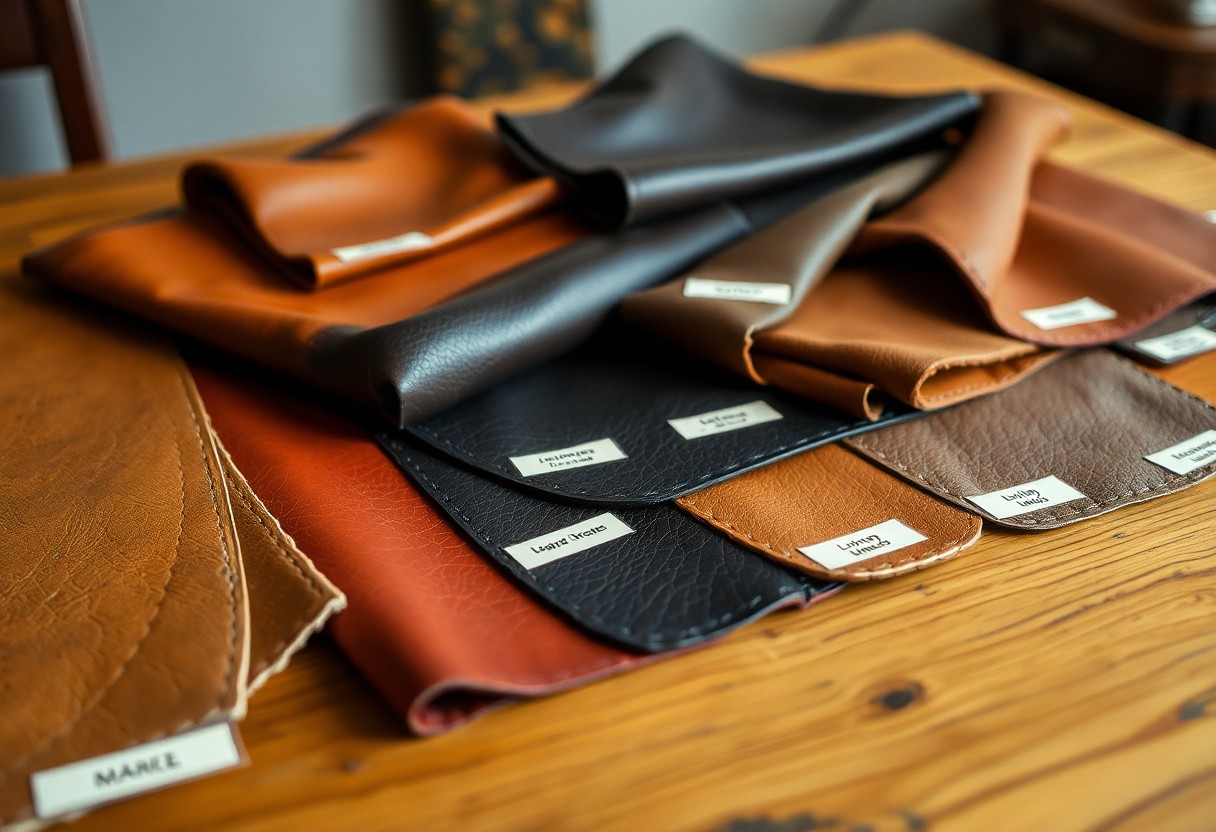
Essential Guidelines for Identifying High-Quality Leather
When assessing leather quality, keep these essential guidelines in mind. Look for full-grain leather that showcases a consistent color and minimal surface blemishes. Examine the grain pattern to ensure it appears natural and uniform. High-quality leather typically has a pleasant aroma and should feel smooth to the touch. Additionally, the edges should be clean and well-finished. While price can often serve as a useful indicator of quality, it should not be the sole factor guiding your purchasing decisions.
Conducting a Visual Inspection for Quality Assessment
When examining leather, the smallest details can lead to significant differences in quality. Look for natural markings and avoid leather that showcases artificial grain patterns. Your leather should exhibit a uniform color throughout, free from any noticeable discolorations or patches. The surface must be devoid of excessive scratches or scars, as these imperfections can compromise the overall appearance and durability of the leather.
Using Physical Testing Methods to Determine Leather Quality
Quality testing can be conducted through simple yet effective methods. For instance, bending the leather allows you to assess its flexibility; watch for any creasing patterns that may indicate inferior quality. Gently pressing your fingernail into the surface of the leather should create a temporary indentation, which is a hallmark of genuine leather. The leather should feel smooth and warm to the touch, rather than cold or plastic-like.
It’s crucial to recognize that physical testing can reveal a wealth of information about leather quality. Upon bending quality leather, it should not crack or develop white marks. You can also perform a water drop test to assess authenticity—genuine leather will absorb water temporarily instead of allowing it to pool on the surface. A flame test, which should only be conducted by professionals, can also confirm the authenticity of the leather.
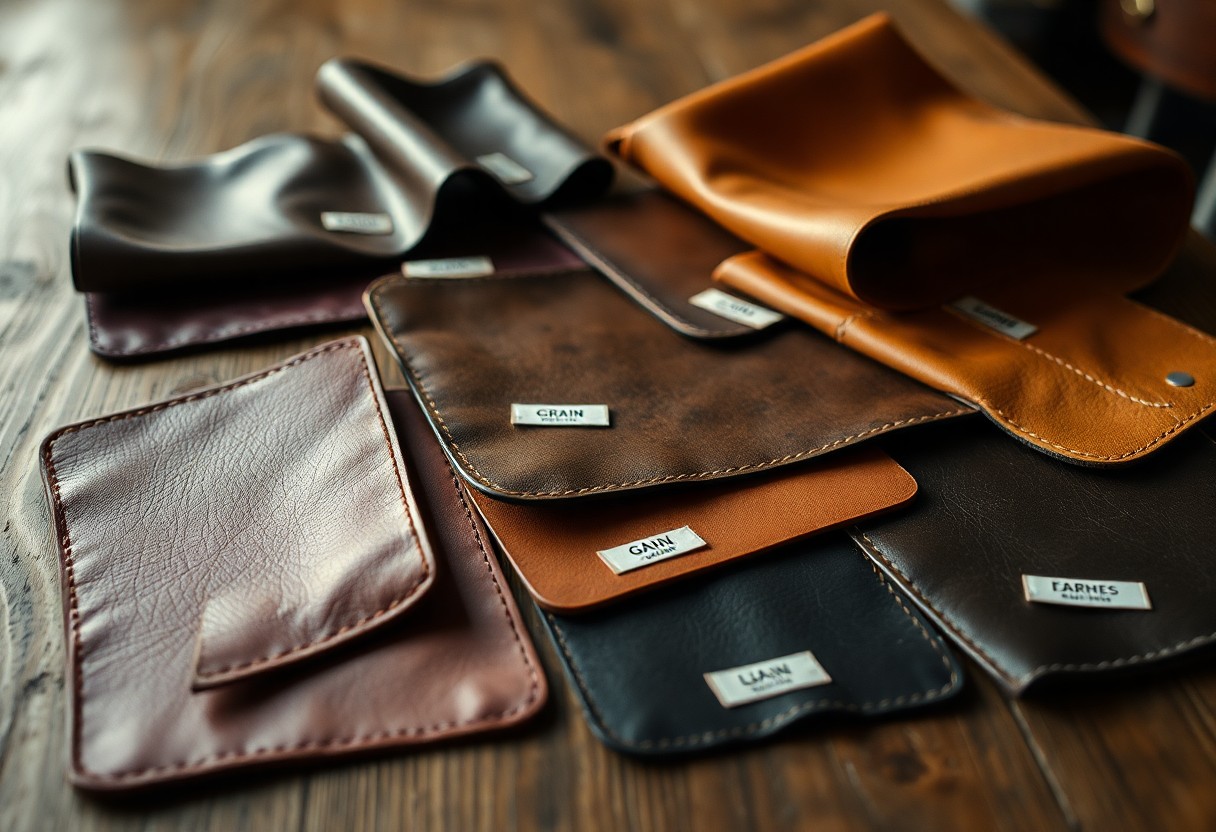
Your Comprehensive Step-by-Step Guide to Effective Leather Care
Unlike synthetic materials, leather necessitates specialized care to maintain its quality and extend its lifespan. Regular maintenance is crucial for your leather items to prevent damage and uphold their aesthetic appeal over time.
| Basic Care | Advanced Care |
| Leather cleaner Soft brush Microfiber cloth |
Leather conditioner Weather protector Leather polish |
Effective Cleaning Techniques for Leather Goods
To clean your leather items effectively, start with a dry brush to remove surface dirt. Always test any cleaning product on a small, inconspicuous area before full application. When using leather cleaner, apply it with a soft cloth and use gentle circular motions, taking care not to saturate the leather with excessive water, which can cause damage over time.
Protection and Proper Storage Strategies for Leather
When it comes to storing your leather items, thoughtful consideration is paramount. Ensure that your leather products are kept in a cool, dry place, away from direct sunlight to prevent fading and drying out. You should also apply leather conditioner every 3-6 months to avoid cracking and maintain the leather’s inherent flexibility and sheen.
The success of your leather care routine relies on regular and consistent application. Shield your items from water damage by utilizing a high-quality waterproofing product specifically designed for leather. Regular conditioning helps to preserve the natural oils within the leather, while proper storage practices prevent shape distortion and color fading, ultimately extending the lifespan of your valuable leather goods.
Comparing the Pros and Cons of Various Leather Types
To facilitate informed decision-making regarding leather products, here’s a detailed comparison of different leather types and their distinguishing characteristics. Each type presents unique advantages and limitations that influence their appropriateness for various applications.
| Pros | Cons |
|---|---|
| Full-grain leather: unparalleled durability and aesthetic appeal | Higher price point, may showcase all natural marks |
| Top-grain leather: smooth finish, water-resistant properties | Not as durable as full-grain options |
| Split leather: economical and flexible for budget-conscious shoppers | Lower quality, less durable than other types |
| Nubuck: sophisticated appearance with a soft texture | Requires regular maintenance to retain its look |
| Suede: versatile and comfortable for various applications | Prone to staining, challenging to clean effectively |
Understanding Durability and Longevity Across Different Leather Types
The aging and wear of different leather types can vary significantly. Full-grain leather has the potential to last for decades when properly cared for, while split leather may need to be replaced after only a few years of regular use due to its inherently lower durability.
Cost Considerations When Selecting Leather Options
Prices for leather can fluctuate widely based on quality and source. Premium full-grain leather can be 5-10 times more expensive than split leather alternatives, making it essential to take your budget into account alongside the desired quality level.
It’s essential to understand that investing in higher-quality leather often yields better long-term value, as these superior materials maintain their appearance and structural integrity far longer than their lower-quality counterparts.
Tailoring Maintenance Needs to Leather Quality
A clear correlation exists between the quality of leather and its maintenance requirements. Top-grain and full-grain leathers typically require less frequent but more specialized care to ensure their characteristics and appearance are preserved for an extended duration.
Furthermore, each leather type necessitates specific cleaning products and techniques tailored to its unique properties. Your maintenance routine should align with the type of leather you own to guarantee the optimal preservation and longevity of your investments.
Discovering the Common Uses and Applications of Leather
Armed with insights into the various leather types, you will find that each variety serves distinct purposes based on its unique properties and durability levels. The leather type selected can significantly impact the performance and functionality of the final product, making it essential to pair the right leather with its intended use.
Fashion and Accessories: The Pinnacle of Leather Usage
In the fashion industry, applications of leather range from luxurious high-end goods to everyday essentials. For example, calfskin is often used in premium shoes and handbags, while exotic leathers such as crocodile and stingray are featured in exclusive designer pieces. Your leather accessories may encompass wallets, belts, and watch straps, each crafted from specific leather types to ensure optimal functionality, durability, and style.
Furniture and Upholstery: Prioritizing Durability
In the furniture sector, full-grain and top-grain leathers are the most favored choices due to their resilience. Upholstered pieces made from these durable materials can endure daily use while developing a beautiful patina over time, enhancing their visual appeal and character.
When selecting leather for furniture, various factors come into play. Consider durability ratings, with full-grain leather capable of lasting up to 25 years when properly maintained. The choice of leather affects both aesthetic quality and longevity, ensuring that your investment stands the test of time.
Industrial Applications: The Demand for High-Performance Materials
In industrial contexts, leather is employed in applications that necessitate high-performance materials. Specialized leather types are utilized in automotive interiors, protective gear, and heavy machinery components, where durability and resilience are paramount.
To ensure optimal performance in these industrial scenarios, your leather choices must meet specific standards. Safety-rated leathers are used in protective equipment, while specialized treatments enhance resistance to heat, chemicals, and wear in industrial machinery, ensuring safety and longevity in demanding environments.
Empower Yourself to Make Informed Leather Selections
With the knowledge you’ve gained from this comprehensive guide, you are now well-equipped to make informed decisions regarding the various types of leather based on your unique needs. By understanding the characteristics of leather, you can select the ideal material for your footwear and other leather goods. From the versatility of calfskin to the exceptional properties of exotic leathers, you can now balance durability, comfort, and style against your specific requirements. Each leather type offers distinct advantages, allowing you to align these qualities with your intended use. Whether you’re in search of rugged cowhide boots or elegant dress shoes crafted from calfskin, you can confidently select the perfect leather that matches your preferences.
Your Guide to Frequently Asked Questions About Leather Types
Q: What sets calfskin apart from full-grown cow leather?
A: Calfskin is sourced from young cattle under one year old, offering a softer and more supple texture characterized by finer pores. In contrast, cow leather is derived from adult animals, resulting in a thicker and sturdier material with more prominent markings. Calfskin is often preferred for high-quality dress shoes, while cow leather is commonly used for work boots and more economical footwear options, providing different benefits based on intended use.
Q: What distinguishes shell cordovan among various leather types?
A: Shell cordovan is crafted from the muscle membrane located beneath the skin of a horse’s rump. This unique leather boasts specific traits: it does not crease but forms elegant rolls, features a dense, shiny surface, and exhibits exceptional durability. The processing of this leather involves turning it inside out, which sets it apart from conventional leather types, making it a highly sought-after option in luxury goods.
Q: How do exotic leathers, like crocodile and stingray, differ in properties and applications?
A: Crocodile leather is soft, flexible, and harvested from the belly and sides of the animal, making it a luxurious choice that often requires CITES certification. In contrast, stingray leather is characterized by its extraordinary hardness and durability but can be more challenging to work with. Stingray shoes are typically crafted as wholecuts since the material allows for stitching only between its hard “pearls,” offering unique aesthetic appeal and functionality.
The article Guide to the different types of leather characteristics and uses appeared first on My Shoes Finder
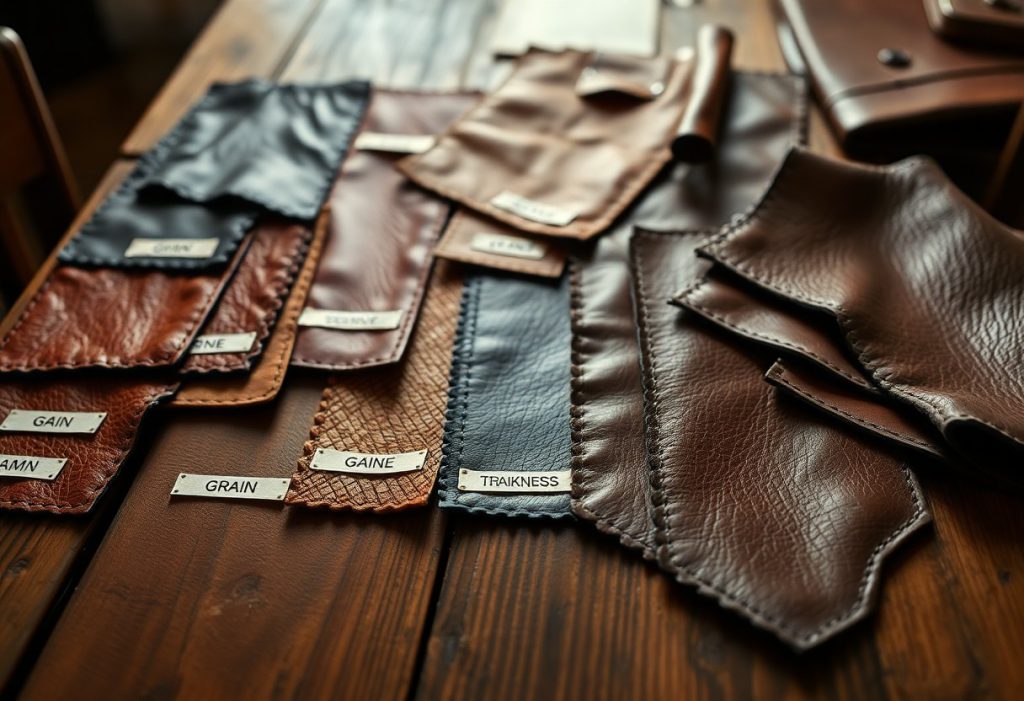
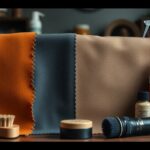
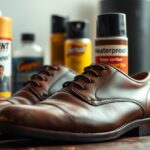


This guide is a timely resource for anyone navigating the complexities of leather choices—it can indeed feel daunting with so many options available. I’ve had my fair share of experiences where the wrong leather choice not only impacted the longevity of my items but also my overall satisfaction. For instance, I once invested in what I thought was a high-quality leather jacket, but it turned out to be corrected grain, which, while visually appealing at first, wore out significantly quicker than I anticipated.